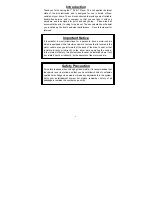
Trying Out the Instrument
R&S
®
SMCV100B
46
Getting Started 1432.7046.02 ─ 02
Figure 6-6: Simplified representation of a test setup**
** = The figure depicts the cabling as a general principle; particular test setups do not require
all connections at the same time
depicts the location of the connectors and explains the con-
nection as principle. In practice, you would rather "substitute" the analyzer by
a DUT, like a base station (BS).
Other than in the example, the DUT can be the source for the reference sig-
nal. Instead of using an external trigger source, the DUT can also send, for
example, a frame trigger signal to the R&S
SMCV100B. The R&S
SMCV100B
acts still as the signal source.
2. Use suitable cables to connect to
R&S
SMCV100B to the signal analyzer or the DUT.
The R&S
®
FSW supplies the 10
MHz external reference signal.
Upon the receiving of an external trigger event, the R&S
SMCV100B starts
the signal generation and then generates a continuous signal. An "Arm" stops
the signal generation. A subsequent trigger event causes a restart of the sig-
nal generation.
To learn more about this topic, refer to:
●
Chapter "Baseband Trigger Signals" in the user manual
●
Chapter "Global Connectors" in the user manual
Triggering the Instrument with an External Signal
















































